Food Loss Related News
Food Loss Related Publications

Good practice for the small-scale production of bottled coconut water
31/12/2007
This guide is designed for use as a learning resource for small and micro entrepreneurs who bottle coconut water, as well as a training resource for extension workers and trainers. It documents good practice for the application of a “middle level” of technology for the cold preservation of coconut water. The information is presented in a very simple and easy-to-follow format.

Garlic: Post-Harvest Operations
21/12/2007
Garlic is a crop widely grown for the fresh local market by many producers on a small scale and by a few large scale producers for both fresh sales and processing. China produced 77 percent of the world’s 15 million tonnes in 2008 (FAOSTAT). There are about 300 varieties of garlic cultivated worldwide and it can be easily grown in most mild climates and stores well for several months under the correct conditions. It has many culinary uses as a flavouring and a range of medicinal benefits.

Pineapple: Post-Harvest Operations
03/11/2005
Pineapple fruit is a member of the Bromiaceae family and grows in tropical and subtropical climates. The fruit is eaten raw, canned or juiced. Pineapple is an important tropical fruit in world trade. Brazil, China, Costa Rica, Indonesia, the Philippines, and Thailand are among the largest producers.
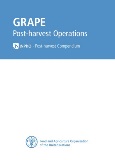
Grape: Post-Harvest Operations
31/03/2005
Grape is one of the most widely utilized fruits in the world, both in its fresh form and processed into raisins, grape juice and wine. These different processed products are important due to the extreme perishability of the fruit. As fresh fruit, grapes are very delicate and the loss at harvest and during the distribution is very high.

Cowpea | Post-harvest operations
15/06/2004
Cowpea is a legume that is extensively grown, particularly throughout sub-Saharan Africa. It is a subsistence crop, often intercropped with sorghum, maize and pearl millet. The peas provide valuable protein, the leaves are used as a nutritious vegetable and the rest of the plant serves for animal feed. The plants are drought tolerant and grow well on relatively poor soils. The peas can be consumed fresh or removed from the pods and dried.
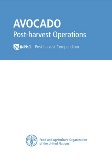
Avocado: Post-Harvest Operations
15/06/2004
Post-harvest handling is critical to Avocado fruit quality; mechanical damage, over chilling and fungal contamination are the most common causes of loss. There is a large world-wide market for predominantly fresh fruit but also for processed foods and cosmetic products.
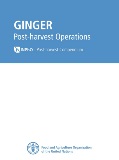
Ginger | Post-harvest operations
22/04/2004
Ginger is the underground root of a perennial plant, which is used as a spice, a preserve and has medicinal properties. The crop requires moist tropical conditions; the largest producers are China, India, Indonesia and Nepal. The rhizome is dug up when the 1 m tall leaves and stems of the plant wither. The product is used fresh, dried or preserved in syrup.

Vanilla | Post-harvest operations
22/04/2004
Vanilla is a major natural flavour widely used in many products including foods, beverages, pharmaceuticals, cosmetics and tobacco. Vanilla seed pods are cultivated in many areas of the world but the main producing countries are China, the Comoros, Indonesia, Madagascar and Mexico, where the crop originated. Cultivation is highly labour intensive and the vanilla vines have very exacting requirements.

Hibiscus | Post-harvest operations
22/04/2004
Hibiscus grows in many tropical and sub-tropical countries and is one of the highest volume speciality botanical products in international commerce. The herbaceous plants produce flowers which are labour intensively harvested for use in a range of products. There are many local and regional markets for hot and cold herbal beverages, jellies and confectionaries.

Edible aroids | Post-harvest operations
28/08/2003
Edible aroids are root crops grown widely in tropical and sub-tropical countries. Taro also known as cocoyam and tannia are the more common species. World taro production in 2008 was over 11 million tonnes principally in Cameroon, China, Ghana and Nigeria, with smaller production in other areas of Africa, Asia and South Pacific (FAOSTAT).

Yams | Post-harvest operations
28/08/2003
Yams are second to cassava as the most important tropical root crop and are a staple food in many parts of Africa, Southeast Asia and the South Pacific. Seventy percent of the 50 million tonne world output of 2008 was grown in Nigeria (FAOSTAT).The starchy tuber, with a rough brown skin, is produced by a herbaceous vine and takes from 8 to 11 months to mature after planting.

Onion: Post-Harvest Operations
28/08/2003
Onion is an important crop worldwide. It is grown in both tropical and temperate regions at all scales of production. Improving post-harvest techniques in small and medium farming can particularly enhance efficiency and quality. If dried and packed properly, the bulbs can be stored and transported for considerable distances without deteriorating.

Barley: Post-Harvest Operations
15/06/2003
Barley is grown in about 70 million hectares in the world. Global production is 160 million tons. Developing countries accounts for about 18 % (26 million tons) of total barley production and 25 % (18.5 million hectares) of the total harvested area in the world.

Soybean: Post-Harvest Operations
06/07/2002
Soybean is a useful oil and protein source and can be used to improve the nutritional value of traditional foods. The beans are processed to give soy flour, meal or milk products and the oil can be extracted leaving a meal which is used for animal feed.

Groundnut | Post-harvest operations
07/06/2002
Groundnut is rich in oil and protein and has a high-energy value. The largest producers are China, India, Nigeria and the United States of America, but many other African and South American countries also have sizeable production. Groundnut provides high-quality cooking oil and is an important source of protein for both human and animal diets.
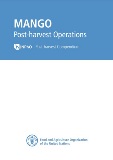
Mango: Post-Harvest Operations
02/06/2002
Mango is an important fruit for inhabitants of the tropics, with India being the largest producer. The trees require a frost-free tropical or sub-tropical climate, are 10 to 40 m in height and evergreen. The fruit is produced seasonally and eaten fresh or used in various recipes. In recent years, mangoes have become well established as fresh fruit and processed products in the global market.

Maize: Post-harvest Operations
15/05/2002
Maize is widely grown throughout the world and has the highest production of all the cereals with 817 million tonnes being produced in 2009 (FAOSTAT). It is an important food staple in many countries, as well as being used in animal feed and many industrial applications. The crop has tremendous genetic variability, which enables it to thrive in tropical, subtropical, and temperate climates.

Status of the postharvest sector and its contribution to agricultural development and economic growth
01/01/2002
JIRCAS international symposium | The past 35 years have witnessed an evolution of priorities within the postharvest sector of developing countries from a primarily technical focus geared toward the reduction of losses, to a more holistic approach designed to link on-farm activities to processing, marketing and distribution.
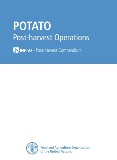
Potato | Post-harvest operations
17/05/2001
Potato is an important staple food world-wide, claiming fourth place after maize, rice and wheat. It is a good carbohydrate source in addition to other nutritional benefits. Potatoes are cooked before consumption which reduces the presence of the toxic alkaloid solanine. Developing countries now produce approximately one third of world production, which was 314 million tonnes in 2008 (FAOSTAT).

Teff: Post-Harvest Operations
14/05/2001
Teff is a staple crop in Eritrea and Ethiopia where it is a native annual grass species but is not widely known around the world. The very small seeds are cooked or fermented and have good nutritional content. The plant is very adaptable to different conditions but is day length sensitive, requiring 12 hours of daylight to flower.
